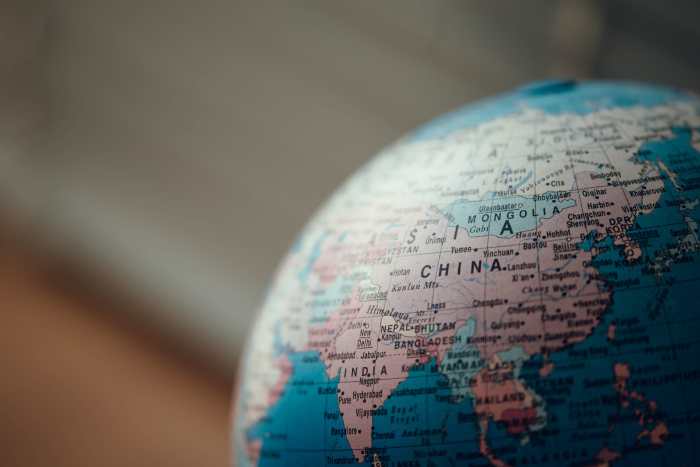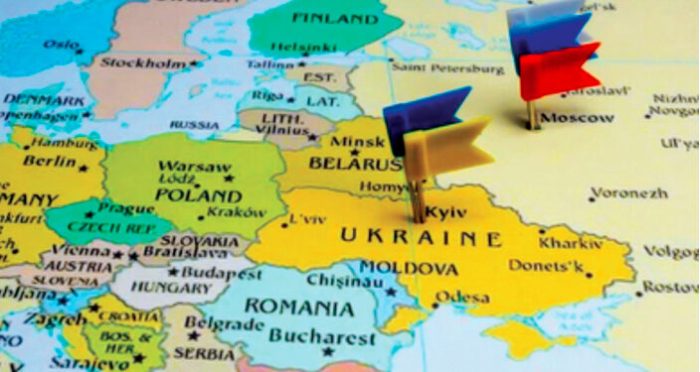The global balance of power alluded to on the map sets the stage for this enthralling narrative, offering readers a glimpse into a story that is rich in detail and brimming with originality from the outset.
This comprehensive analysis delves into the historical evolution of global power dynamics, examining key events, technological advancements, and political ideologies that have shaped the international landscape. It explores the current dynamics of global balance of power, identifying key players, analyzing their strengths and weaknesses, and discussing the role of international organizations and alliances in shaping the global order.
The Historical Evolution of Global Balance of Power

The global balance of power has been in a constant state of flux throughout history, shaped by a complex interplay of factors such as technological advancements, economic growth, and political ideologies. From the rise and fall of empires to the emergence of nation-states, the balance of power has been a central factor in shaping international relations.
The following timeline provides a comprehensive overview of key events that have shaped the global balance of power:
| Period | Major Powers | Key Events | Influencing Factors |
|---|---|---|---|
| Ancient World | Egypt, Mesopotamia, China | Conquest and expansion of empires | Technological advancements, military prowess |
| Middle Ages | Holy Roman Empire, Byzantine Empire, Islamic Caliphates | Rise of feudalism, religious wars | Political ideologies, technological stagnation |
| Early Modern Era | Portugal, Spain, France, England | Age of Exploration, colonization | Naval power, economic growth |
| 19th Century | Great Britain, France, Russia, Prussia | Industrial Revolution, European imperialism | Economic power, technological advancements |
| 20th Century | United States, Soviet Union, Great Britain, France | World Wars, Cold War | Nuclear weapons, economic competition |
These key events and factors have played a significant role in shaping the global balance of power, leading to shifts in power dynamics and changes in the international order.
Current Dynamics of Global Balance of Power

The current global balance of power is characterized by the emergence of new powers and the relative decline of traditional superpowers. The United States remains the dominant power, but its influence is being challenged by the rise of China, India, and other emerging economies.
Other key players in the current global balance of power include:
- China: Rapid economic growth and military modernization
- Russia: Nuclear arsenal and strategic influence
- European Union: Economic and political integration
- India: Large population and growing economic power
- Japan: Economic powerhouse and technological advancements
International organizations and alliances also play a significant role in shaping the global order. The United Nations provides a platform for multilateral cooperation, while alliances such as NATO and the G7 serve to promote common interests and security.
The most significant factors influencing the current global balance of power include:
- Economic power
- Military strength
- Technological advancements
- Demographic trends
- International alliances
These factors will continue to shape the global balance of power in the coming years, leading to potential shifts in power dynamics and changes in the international order.
Emerging Trends and Challenges to Global Balance of Power

The global balance of power is constantly evolving, and there are several emerging trends and challenges that could have a significant impact in the coming decades.
One of the most significant trends is the rise of new powers. China, India, and other emerging economies are rapidly increasing their economic and military power, and they are likely to play a more prominent role in the global balance of power in the future.
Another emerging trend is the increasing interconnectedness of the world. Globalization, climate change, and technological disruption are all challenges that will require cooperation between countries to address.
The following table illustrates potential shifts in power dynamics in the coming decades:
| Region | Current Major Powers | Potential Shifts |
|---|---|---|
| Asia | China, Japan | Rise of India, ASEAN |
| Europe | European Union, Russia | Increased influence of Germany, France |
| North America | United States | Decline of US dominance |
| South America | Brazil | Rise of Argentina, Chile |
| Africa | South Africa, Nigeria | Emergence of Ethiopia, Kenya |
These potential shifts in power dynamics could lead to a more multipolar global order, with several countries playing a more significant role in shaping the international system.
Implications for International Relations

The global balance of power has significant implications for international relations. It affects foreign policy decision-making, diplomatic negotiations, and the likelihood of conflict.
For example, a country’s foreign policy may be shaped by its desire to maintain or improve its position in the global balance of power. Similarly, diplomatic negotiations may be influenced by the relative power of the countries involved.
Shifts in the global balance of power can also lead to changes in international relations. For example, the rise of the United States as a global superpower led to the creation of a new international order after World War II.
The following are some examples of how shifts in the balance of power have led to changes in international relations:
- The rise of the United States as a global superpower led to the creation of the United Nations and the Bretton Woods system.
- The decline of the Soviet Union led to the end of the Cold War and the emergence of a unipolar world.
- The rise of China as a global power is leading to a more multipolar world.
The global balance of power is a complex and constantly evolving phenomenon. It is a key factor in shaping international relations and understanding it is essential for anyone who wants to understand the world around them.
FAQ Section: The Global Balance Of Power Alluded To On The Map
What are the key factors that have influenced the global balance of power throughout history?
Technological advancements, economic growth, political ideologies, and military capabilities have played significant roles in shaping the global balance of power.
How has the global balance of power changed in recent decades?
The rise of new powers, such as China and India, has challenged the traditional dominance of the United States and Europe, leading to a more multipolar global order.
What are the challenges to the global balance of power in the 21st century?
Globalization, climate change, and technological disruption are among the challenges that could reshape the global balance of power in the coming decades.